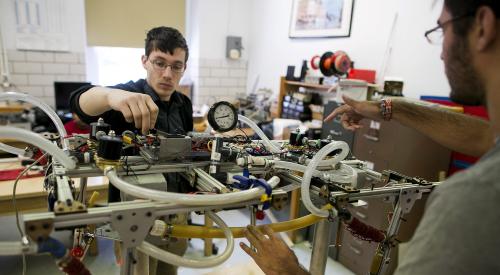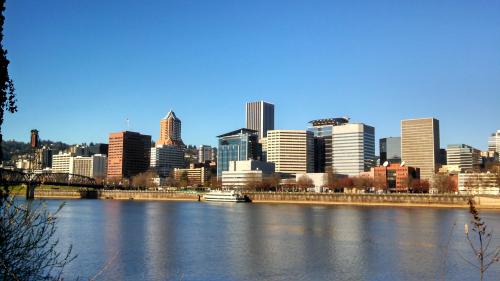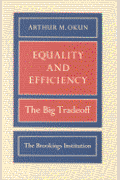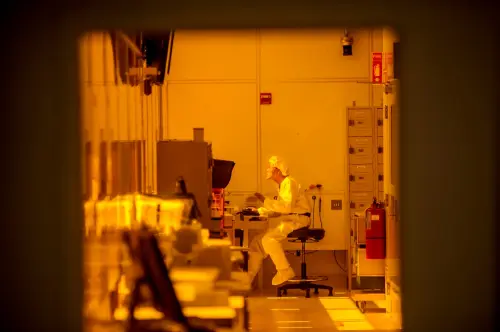In terms of economic impact, some schools are household names. The Massachusetts Institute of Technology, Stanford, and a handful of other elite universities dominate the business news with multimillion-dollar corporate partnerships and blockbuster startups spurred by star faculty, students, and alumni. MIT reports that 25 percent of its alumni start their own companies, and the firms currently active have total revenue of $1.9 trillion—more than the GDP of India.
Yet it is not only elite schools that have economic impact. Almost every city is home to multiple institutions of higher education—ranging from community colleges to massive public universities with hundreds of millions of dollars in research grants and tens of thousands of students—that are perhaps less prestigious but may be better able to meet the needs of local employers by supplying a skilled workforce, solving technical problems for regional firms, and bringing research to market locally.
In the past, many of these schools have been brushed aside because they don’t have the global footprint of nearby elite private schools. But with local alumni and a willingness to deviate from the rules that govern most research universities, these local institutions are ideally situated to support their hometowns. This advantage carries through in a number of ways.
First, in order for a university to support the labor market, its students need to actually work in the city. Students who come from around the world, study, and then return home contribute little to the local workforce (though they support the economy through their consumption). Second, studies show that workers who are from the regions in which they are employed are far less likely to relocate. Given that attrition rates of skilled workers are one of the top concerns of CEOs, the ability to retain indigenous workers is an important business consideration.
Colleges and universities with local alumni also create an incentive for these schools to establish connections with regional businesses because their fundraising base is more concentrated. For every university, alumni relations is primarily about generating revenue. Global institutions court alumni donors around the world, while regional schools do so regionally.
Addressing local industry needs is also a way for these educational institutions to carve out specialization and prominence. For example, Lorain County Community College near Cleveland runs a center called the SMART Commercialization Center for Microsystems. The center is a shared resource within the community that helps companies inspect and perform quality-control tests on new sensors. Given that Cleveland and many surrounding Midwestern cities have leading universities and firms involved in instruments and controls, the SMART Center serves as an important testbed facility to link academia and industry needs.
In Pittsburgh, Duquesne is the first university in the nation to establish a faculty-designed, university-operated community pharmacy. The pharmacy is located in the low-income Hill District, and it meets its educational mission by providing pharmacology students real-world training through community health screening, lifestyle counseling, and drug therapy and management.
If public, private, and civic leaders were to place institutions like these on the sidelines and focus instead on elite schools, they would be leaving economic opportunities on the field.
Cities can leverage their higher education institutions in a number of ways. First, cities and schools should partner on federal grant applications. Federal funding agencies approve proposals that have city-wide impact to diverse populations, and including a cross-section of educational partners is a no-brainer. Second, cities should consider more than a school’s endowment when partnering in economic development strategies. While endowment dollars are attractive, institutions of higher education can move the needle via programming, not just through financial contributions. Finally, by consistently including regional schools in partnerships and having mayors and other community leaders celebrate schools’ contributions, cities can establish mutually beneficial partnerships with schools to bolster community-wide efforts.
The Brookings Institution is committed to quality, independence, and impact.
We are supported by a diverse array of funders. In line with our values and policies, each Brookings publication represents the sole views of its author(s).










Commentary
For higher-education firepower, cities should check their own backyards
October 20, 2016